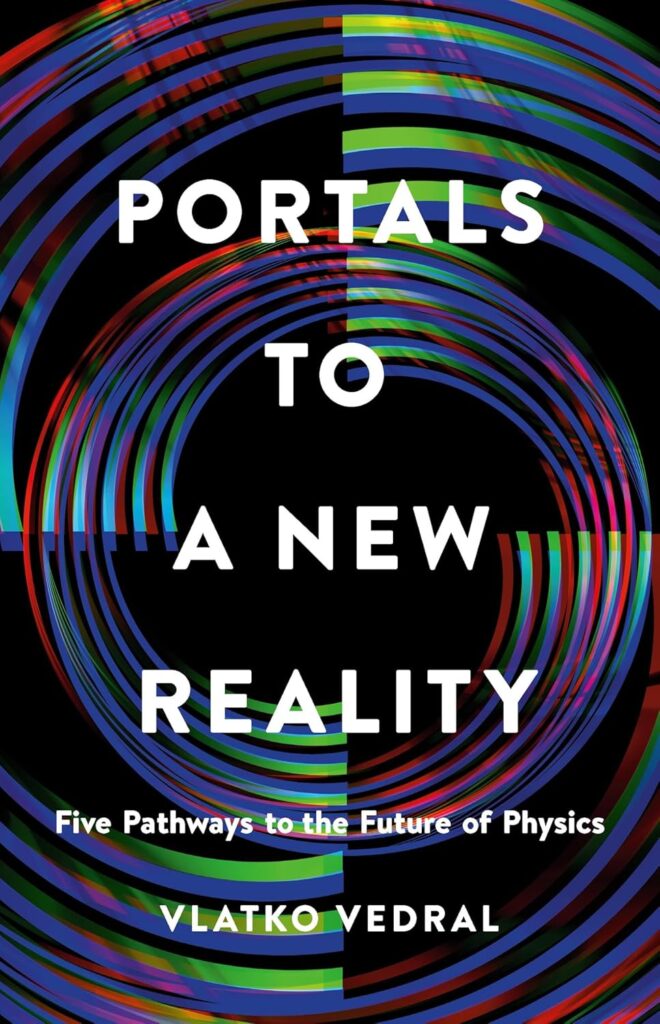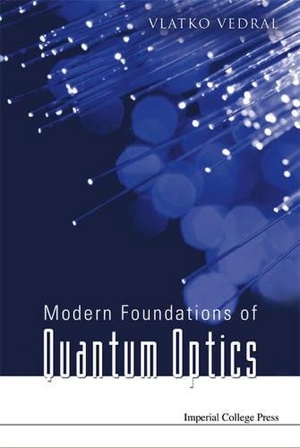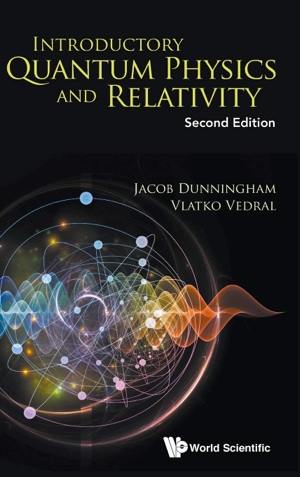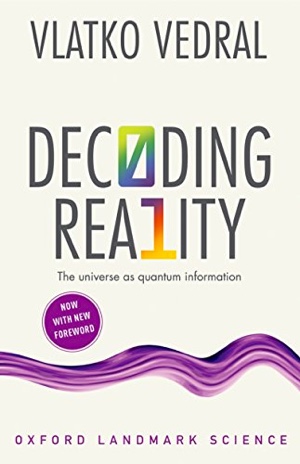What is a “click”?
Or “Does a photon make a sound when there is no one there to hear it?”
Every time we scientists submit a paper for publication, there is the so-called peer review. Our colleagues (‘peers’) are asked to read our submitted paper and evaluate it. This affects whether and how the paper needs to be revised and if, ultimately, it gets published.
I am saying all this not to then go on to complain about referees and the peer review process (I could, but it’s boring), but in order to motivate the scientific topic behind this blog. It comes from an exchange with one of my recent referees.
The crux of the argument is about what constitutes the primary objects in quantum physics. What entities should we start with and build the rest from them? I have been advocating the point of view that starts with quantum waves, quantum fields as they are formally known, and then derives all else from it, particles, matter, light and so on.
The referee, on the other hand, was emphasising the fact that we ultimately know everything through our senses (aided by sophisticated experimental equipment, but still ultimately our sense). It is therefore detection which – according to this logic – ought to be primary and all other things derived from it. Clicks in detectors, in other words, are what the universe is made of. What is a photon? A photon is a particle that makes a click in the photodetector! What is an electron? A particle that makes a click in the “electodetector”. And so on…
There is something intuitive about this perspective, since, after all, science starts with a sequence of observations (“clicks” in our brain), which we try to analyse, understand and ultimately synthesise into our scientific theories. However, as is transparent, our interpretation of observations does not come from nowhere, but is instead based on our prior beliefs, views, theories that we hold even before we started our observations. In other words, there is no such thing as a pure observation, or a “naked” click. To put it simply, in order to make a photodetector, one already had to understand some rudimentary electrodynamics.
It is for this reason that I think it impossible to build physics on the notions of clicks as primary elements. In fact, as far as I am concerned, rather than being an elementary fact, even a single detection, a single click, is an extraordinarily complicated phenomenon. Because of this, in quantum physics we talk about the measurement problem, namely why we get clicks at all, if everything is ultimately made up of quantum waves.
This is the topic I’d like to discuss here.
Let’s take a rather simple experiment. We excite an atom, which emits a photon, which travels to our detector, which, upon absorption, makes a click sound. How are we to make sense of this in terms of quantum waves?
Even a simple sequence of events such as this one, is actually really complex when we have to explain it in terms of the bare fundamentals. For starters, what is an atom and how did we excite that atom? Why did it subsequently emit a photon? Why did that photon travel through space to us and get sucked into the detector? How does the detector interact with the photon to register its presence? It then produces a sound, which has to be explained, as well as how that sound propagates through the air in order to reach our ears. But our ears are just ‘phonodetectors’ (phonons are particles of sound, just as photons are particles of light). How did our ears detect the sounds sent by the detector and how did the brain then convert that into a sensation of a click sound?
Just as it is unsatisfactory to define a photon as that particle which makes a click in a photodetector, it is equally bad to say that phonons are particles making a click sound in our ears. Neither really explains anything…
I’d like to give you (more likely, outline) the best picture of the above experiment we have. And, bear in mind, that we have no clue about how to explain the human perception – “why does a click to us feel like a click?” is a question no neuroscientist, or anybody else for that matter (especially not a philosopher), understands.
An atom for starters is composed of more fundamental particles, electrons, quarks, photons and gluons (a few other things too, but probably not worth mentioning). Quarks are glued together into protons and neutrons via particles called – what else? – gluons. Protons and neutrons are also thereby glued together, albeit more weakly, into atomic nuclei. Nuclei are, for our purposes, stable enough objects that we can talk about them without having to always talk about their constituents. The electrons exist around these nuclei and are attracted to them forming orbits through exchanges of (not “attractons”, but) photons.
Normally, at room temperature, electrons exist in their lowest orbits around nuclei. However, if we shine some light onto an atom, an electron from the lowest orbit will get some energy and go to a higher orbit. It is because the higher orbits are not stable (since they couple of the surrounding quantum electromagnetic field – its vacuum to be more precise) that they go back to the ground state and by doing so they emit photons.
These photons can generally leave atoms in all directions and, in fact, this is how quantum physics described spontaneous emission. However, in one of these directions (or a small range of them), the photon will encounter a photodetector (in other directions it will just continue till in encounters another piece of matter that can absorb it).
A photodetector is typically a conductor of electricity, but it only conducts when a photon hits it and excites one electron. This electron then gets accelerated by an electric potential, thereby hitting atoms in the detector and knocking out even more electrons. Ultimately, the size of the current (i.e. the number of moving electrons) becomes large enough that the detector is able to notice it. What does that mean?
It means that in a normal state, the detector is an insulator (it’s some kind of a p-n junction as is known in the solid-state jargon, but we need not go into details here) and generates no signals (which is how it is calibrated). But when the light falls onto in, it gives it enough energy to start to conduce the current whose moving electrons are easily detected because a moving charge generates an electromagnetic field.
When this detection occurs, we can imagine that a sound is generated. This is the click we hear (real detectors, in fact, generate a visual response, but let us – for the sake of our discussion – imagine that they are like Geiger counters and produce clicks).
The click is a sound wave emitted by the detector that travels in all directions, and in one of them it encounters our ear. The inside machinery of our ear starts to vibrate which generates a small current flowing down our neurons into the depths of our brain, where the sensation of the click is finally generated (as I said, no one really knows exactly how this happens, but an explanation will ultimately no doubt be available one day).
So a click is an immensely complex process where the optical wave (laser) is converted into an electronic wave (an excited atom), which then emits another optical wave (a photon). This wave then generates another electronic wave in the photodetector (a current), ultimately resulting in a sound wave (vibrations of atoms in the air between the detector and us). The sound wave gets converted into a matter (mechanical) wave in our ear and again into an electron wave going down our neurons into the brain. This chain of events ultimately leads to the brain conjuring up the sensation of a click sound.
Even in this compressed version in the last paragraph, it is pretty clear that a click is an emergent phenomenon and not something that could in any way be conceived of as being fundamental. And it doesn’t even stop with a click. Upon hearing a click I could then tell this to my friend. You can see how me telling the news of a click to my friend can also be analysed in terms of quantum waves and so on and so on…there is clearly nothing special about humans here other than the way we hear sound (though I suspect most mammals hear clicks more or less like us).
I am of course not pretending that the current story is the final one, but it seems to me that, if anything, the final story will be even more complicated. More complicated in one sense (a greater degree of detail), however, it will also be less complicated because it is already simply just all about quantum waves. And this is a great unification and simplification in our understanding.
Maybe – just maybe – the next physical theory will also contain the explanation of why “a click sounds to us like a click” (how is it that we “hear clicks” while bats actually “see clicks” instead?). One thing I am confident of is this: the explanation can only come from physics (and not from chemistry or biology or psychology or medicine or philosophy or mathematics alone).
Sign up to my substack
BOOKS
ASK ME ANYTHING!
If you'd like to ask me a question or discuss my research then please get in touch.





